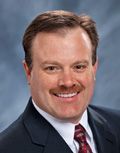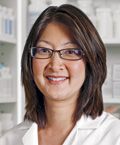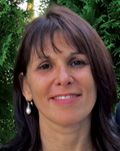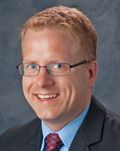Reinvent your practice
Three ways to increase income and reach patients in need
How are you managing the unending chaos of prescription refills, physician calls, payer rejects, and unpredictable workflow? In too many community pharmacies, the pressures are running pharmacists ragged. Instead of being proactive, they are reacting to workload pressures set by calls from patients, physician offices, and payers.
It doesn’t have to be this way.
See also: Survey: Med-synchronization programs improve adherence
Savvy owners are taking the initiative by launching new programs to take control of the workflow and make major strides into direct patient care.
“Innovation is almost a leap of faith, but the return is enormous,” said Cliff Holt, PharmD, owner of Utah Family Pharmacy in St. George, Utah. “This is something the big chains just aren’t set up to do well and can’t do quickly.”
Here is a look at three innovative community pharmacy programs that address real patient needs: medication adherence, smoking cessation, and naloxone distribution. Any of them can be instituted in any pharmacy with any prescription volume. And all three can help pharmacists retake control of their pharmacies.
Rx adherence
Medication adherence has long been recognized as a major problem. Barely half of all maintenance scripts for hypertension are refilled by the end of the first year. Up to half of patients taking statins stop refilling their prescriptions in the first 12 months. Pharmacists can help change those unhealthy behaviors.
See also: New guide offers naloxone-dispensing information for pharmacists

Curtis Rising“Patients need a solution to help them move beyond whatever barriers are getting in the way of taking their medications appropriately,” said Curtis Rising, PharmD, owner of The Medicine Shoppe in Rapid City, S.D. “We have become the place that provides those solutions, not just the place where people pick up their meds.”
Like many community pharmacies, Rising’s uses Simplify My Meds, a turnkey adherence program developed by the National Community Pharmacists Association (NCPA). The program and others like it synchronize refills so that patients need make only a single pharmacy visit each month or quarter, depending on the length of the fill.
The personal touch
The store calls patients about a week before the refill is due. The call is both a reminder to the patient and a quick check for the pharmacist. If there are no changes to the patient’s condition, the script or scripts are processed for refill. If there are changes, the pharmacist has time to talk with the patient or contact the prescriber as needed.
“If I find a patient isn’t taking his pravastatin, we can talk about it without pressure,” said Patrick Devereux, PharmD, vice president of clinical services and managing pharmacist at FMS Pharmacy in Bessemer, Ala. “Maybe it’s money, maybe there are side effects. Maybe he isn’t feeling any difference from the medication. Maybe a buddy complained about muscle pain from a statin. Synchronizing refills helps manage the workflow and ensures that we have the time to talk with every patient before every refill.”
That personal touch helps boost adherence. Left to their own devices, patients who need a monthly refill typically order every 37 to 45 days, noted Bob Lomenick, RPh, owner of Tyson Drug in Holly Springs, Miss. That is about eight refills a year. Getting patients back on track with 12 annual refills adds a 50% jump in prescription volume without adding a single patient.
Staff morale
Synchronizing medications helps improve staff morale because they, too, have a more predictable, less frenzied working environment. And the greater the number of patients enrolled in medication synchronization, the easier it is to manage prescription inventory. Being able to predict refills helps just-in-time ordering to minimize stock on hand.
“Any business owner knows that more inventory turns is more money in your pocket,” Rising said. “There is less need to keep expensive medications in stock at all times, just in case.”

Kerri OkamuraKerri Okamura, BS Pharm, director of pharmacy operations for KTA Superstores, Hilo, Hawaii, which owns four pharmacies in Hawaii, found another advantage to synchronizing medications. Hawaii is subject to hurricanes and tropical storms. Her pharmacists can call patients for an early refill if their regular refills might be disrupted by intense weather.
“We see better adherence with synchronized refills, which means better outcomes for our patients,” Okamura said. “Patients love the convenience, and they pay more attention to adherence because they know we care. We call and talk with them. There is no down side.”
Consumer satisfaction
Devereaux and Holt have taken adherence a step further by repackaging medications for easier adherence. Using the kind of bubble packing originally developed for long-term care, both pharmacies package all oral medicines scheduled for each administration in a single dated, color-coded pack.
“Providing that kind of calendar pack is one less barrier for patients,” Devereaux said. “Instead of being surrounded by pill bottles and vials, they see a single package with everything they need to take at one time.”
Holt added that physicians and payers support pharmacy-based adherence programs because they measurably improve patient outcomes and satisfaction. Both outcomes and satisfaction contribute to the Star Ratings used by the Centers for Medicare and Medicaid Services to rate health plans for quality and determine reimbursement rates.
“Most patients have never thought about adherence before,” Holt said. “We can help them think about and do something about it. That’s a powerful incentive for physicians and health plans.”
Smoking cessation
There is good news on smoking cessation. An aggressive tobacco program can dramatically reduce healthcare spending. And pharmacy programs can play key roles in both identifying tobacco users and helping them to quit.
A study of California health spending published earlier this year found the state had cut spending on healthcare attributable to smoking by 13% in 2009. Spending was $487 per resident and $4,603 per smoker.
“We know the costs of smoking are tremendous,” said study author Wendy Max, PhD, professor of Health Economics and co-director of the Institute for Health and Aging at the University of California, San Francisco (UCSF) School of Nursing. “In every case we examined, the benefits far outweigh the costs of cessation programs. We are learning more effective ways to target smoking-cessation outreach to be even more effective.”
One of the most direct ways is through pharmacy.
Most trusted
“We’re the health provider people see most frequently and we’re the health provider people trust the most,” said Katie Bastug, PharmD, smoking-cessation director at one of the Barney’s pharmacies in Augusta, Georgia. “And we’re the provider who already handles smoking cessation products. If you want to quit, we’re here to back you up.”
Barney’s, with eight locations in Augusta, started its first formal smoking-cessation program earlier this year as one of many wellness classes. When staff discovered that quitting requires individual attention and counseling, it became a one-on-one clinical counseling service. But the real key to successful smoking cessation is active participation by pharmacy technicians and clerks.
“We rely heavily on them for recruitment,” Bastug said. “When you see someone looking at smoking cessation products or buying a smoking OTC [aid], you have an automatic opening to talk about smoking-cessation services.”
Bastug also runs a monthly report on all prescription smoking-cessation products dispensed. She proactively contacts patients about free smoking-cessation counseling, product discounts, and follow-up.
Building that kind of systems support is a vital first step for pharmacies that want to launch smoking cessation, said Robin Corelli, PharmD, professor of Clinical Pharmacy and the TJ Long Chair in Chain Pharmacy Practice at the UCSF School of Pharmacy.
“You have to have a workflow and tracking program to identify tobacco users,” she said. “Most pharmacies don’t have a dedicated data field for tobacco use. Once you have the systems in place, you are in a position to start.”
Getting started
There are multiple in-person and online training programs for pharmacists, including Rx for Change, created by UCSF, Purdue University, and Stanford University.
“Pharmacists are in the prime position to change tobacco-use behavior,” said Lisa Kroon, PharmD, CDE, professor and T.A. Oliver Chair of the Department of Clinical Pharmacy at UCSF. “CDC has identified pharmacists as a huge, untapped resource. We have seen that pharmacists want to do smoking cessation. They just need systems in place and some basic training.”
The potential is huge. The latest NCPA survey found that just 17% of community pharmacies have smoking cessation programs, up from 12% in 2012.
“You have never seen such loyalty as someone you helped stop smoking,” Bastug said. “We are seeing the return on our investment in just the few months our smoking cessation program has been running.”
Life-saving naloxone
Naloxone may be the most effective life-saving drug that few community pharmacists have dispensed. It has the potential to prevent opioid overdose mortalities, one of the leading causes of accidental death in the United States today.

Ryan Oftebro“Every community pharmacy that serves a population at risk of opioid overdose should stock and distribute naloxone,” said Ryan Oftebro, PharmD, president and principal of Kelley-Ross & Assoc. Inc., which owns five pharmacies in Seattle, Washington. “Given the broad use of prescription opioids, that is just about every community pharmacy. Naloxone has the unique ability to reverse acute opioid toxicity and save lives.”
Naloxone was approved by the Food and Drug Administration in 1971 and is the agent of choice for the reversal of acute opioid toxicity. It is highly selective, with little-to-no pharmacologic effect in individuals who have not received opioids.
The drug can be administered by injection, via auto-injector (Evzio; Kaléo Pharma), or intranasally. It acts in two to three minutes and can be readministered as needed.
Acute need
The need is acute. Prescription painkillers, primarily opioids, kill 44 people in the United States every day, more than 16,000 annually, according to the Centers for Disease Control and Prevention. That is in addition to the thousands who die from illicit opioids. People in rural counties are more likely to overdose than those in large cities.
In 2008, New Mexico had the highest overdose death rate in the country. Taos and surrounding rural areas are the overdose epicenter in New Mexico. Nearly all the overdoses were accidental and most were from prescription opioids.

John Hutchinson“Naloxone can keep you alive long enough to get help,” said John Hutchinson, PharmD, BCPS, director of Health Outreach at Holy Cross Hospital in Taos. “Anyone who has a high risk of overdose or who is likely to come into contact with someone at high risk of overdose, we want them to have naloxone.”
The state health department had been distributing naloxone as part of its needle exchange program since the early 2000s, Hutchinson said. After the state pharmacy association convinced the legislature to authorize pharmacists to prescribe naloxone, he launched the state’s first community-based naloxone co-prescription distribution system targeting prescription drug overdose in 2013.
Every patient discharged from the hospital or the emergency department with an opioid is encouraged to take home naloxone too. Working one-on-one with local medical practices, Hutchinson is educating prescribers about the ever-present dangers of opioid overdose and the ready availability of a safe and effective safety-net drug.
The perfect niche
“This is all about the reduction of the harms associated with opioid use,” Hutchinson said. “That makes it the perfect niche for community pharmacy. Currently, the drug is covered by Medicaid, and at least in New Mexico, pharmacists get reimbursed for patient education on naloxone.”

Bethany DiPaulaPharmacist reimbursement should improve as more payers recognize the opportunity to reduce the risks of opioid use by increasing distribution of naloxone, said Bethany DiPaula, PharmD, BCPP, director of pharmacy at the Springfield Hospital Center and associate professor at the University of Maryland School of Pharmacy. A task force she headed, sponsored by the College of Psychiatric and Neurologic Pharmacists, recently published Naloxone Access: A Practical Guideline for Pharmacists, to help speed adoption by community pharmacies.
“We are paving the way for pharmacists to take a leading role in the management and reduction of opioid overdose,” DiPaula said. “Pharmacists should be playing a larger role by making naloxone readily available in the community.”
A tool that saves lives

Jeffrey BratbergRhode Island tackled naloxone from the chain side. Jeffrey Bratberg, PharmD, BCPS, clinical professor of Pharmacy Practice at the University of Rhode Island College of Pharmacy, worked with Walgreens on a pilot program to train pharmacists on overdose education and naloxone dispensing in the midst of a 2013 spike in fatalities from heroin laced with fentanyl. Two years later, every Walgreens and CVS in the state stocks naloxone. Pharmacists are trained to screen patients at risk for overdose, teach anyone how to recognize an overdose and use naloxone, and prescribe naloxone under collaborative practice agreements (CPAs) with local physicians.
“Addiction is a chronic disease and pharmacists routinely manage chronic diseases using CPAs,” Bratberg said.
“Naloxone is a tool that saves lives," he continued. "Among those patients experiencing overdose reversals, more people enter treatment and/or use fewer opioids. Any pharmacist, in any state, can stock naloxone in any form. They can call any prescriber and talk about the need for naloxone. And because there is an overdose risk at any dose of opioid, every pharmacist has patients at risk. Carrying naloxone, encouraging prescribers to write for naloxone, and encouraging patients to take naloxone home is taking an active role in managing the risks inherent in opioid use.”
Contribuing Editor Fred Gebhartworks all over the world as a freelance writer and editor, but makes his home in Oregon.